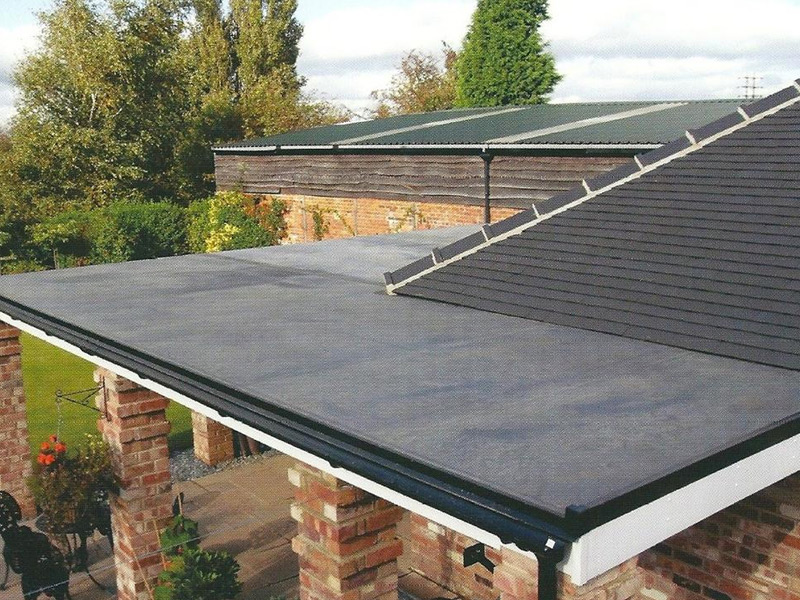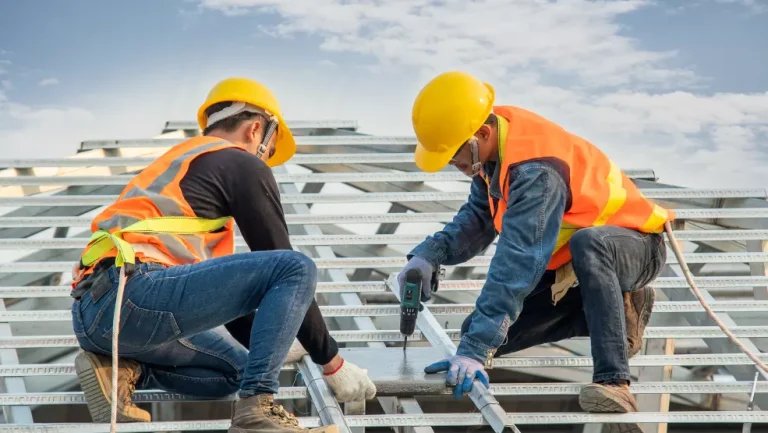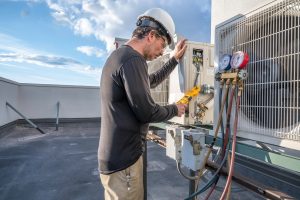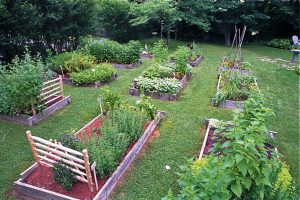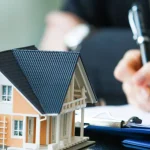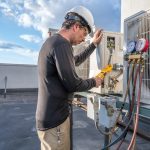In recent years, flat roofs have moved beyond being considered purely functional to becoming a staple in modern architecture. Their sleek, minimalist design offers homeowners and businesses alike a chance to explore new possibilities in both aesthetics and utility. Flat roofs were once primarily found on commercial buildings due to their practical use in urban areas. However, with evolving technologies, materials, and design principles, flat roofs are now increasingly popular for residential homes as well.
In this article, we will explore the exciting new trends in flat roofing that are transforming the industry. From cutting-edge materials to sustainable innovations and aesthetic enhancements, flat roofs are evolving in ways that deliver both functional benefits and visual appeal.
1. Sustainable Roofing Materials
One of the most significant trends in flat roofs is the shift toward sustainable and eco-friendly materials. With the growing emphasis on reducing carbon footprints, many homeowners and builders are opting for materials that offer environmental benefits without compromising on durability or appearance.
Green Roofs
Green roofs, also known as living roofs, are one of the most eco-conscious innovations in flat roofing. These roofs are partially or completely covered with vegetation, creating a natural habitat for plants while simultaneously offering significant environmental benefits. Green roofs help manage stormwater by absorbing rainwater, reducing runoff, and decreasing the risk of flooding. They also provide natural insulation, which can help regulate indoor temperatures and reduce energy consumption.
Moreover, green roofs contribute to improved air quality by absorbing carbon dioxide and producing oxygen. In urban areas, green roofs also help mitigate the urban heat island effect, where cities experience higher temperatures due to the concentration of buildings and concrete surfaces. While they require initial investment in terms of installation, the long-term energy savings and environmental advantages make them a worthwhile consideration for those looking to adopt sustainable design principles.
Recycled and Reflective Materials
Another eco-friendly trend in flat roofing is the use of recycled materials. Many flat roof systems now incorporate recycled rubber, plastic, and metal, which not only reduces waste but also promotes sustainability. These materials are durable, cost-effective, and often come with a longer lifespan compared to traditional roofing materials.
Additionally, reflective roofing materials are gaining popularity. These materials are designed to reflect sunlight rather than absorb it, which can help keep buildings cooler in the summer months. This reduces the need for air conditioning and lowers energy consumption, making reflective flat roofs a cost-effective and eco-friendly option.
2. Energy-Efficient Flat Roof Systems
Energy efficiency continues to be a driving factor in roofing design, and flat roofs are no exception. With flat roofing systems being more exposed to the elements, they present an opportunity to integrate innovative technologies that help conserve energy.
Solar Panels Integration
Solar energy is an increasingly popular option for homeowners looking to reduce their reliance on traditional energy sources. With flat roofs, the integration of solar panels is a natural progression. Flat roofs offer a larger and more accessible surface area to install solar panels, allowing for optimal placement to capture sunlight throughout the day.
In fact, many new flat roof designs are incorporating solar-ready systems, where the roof is specifically designed to accommodate solar panels. This ensures that homeowners can easily install solar systems without major modifications to the structure. With tax incentives and the decreasing cost of solar panels, this trend is expected to continue growing, making flat roofs a valuable asset for both sustainability and cost-saving in the long run.
Cool Roofs
Cool roofing is another trend that is transforming flat roofs. A cool roof is one that has been designed to reflect more sunlight and absorb less heat than a standard roof. This is particularly beneficial in areas with hot climates, as it can significantly lower the temperature of the building, reduce cooling costs, and extend the lifespan of the roof.
Cool roofs are typically made from highly reflective materials or coatings that can be applied to flat roof systems. The result is an energy-efficient roofing solution that minimizes the environmental impact while offering practical benefits for homeowners and businesses.
3. Enhanced Durability with Modern Membranes
One of the key elements of a flat roof is its membrane, which provides a waterproof barrier. New advancements in membrane technology have resulted in highly durable and long-lasting materials that extend the life of the roof and reduce maintenance needs.
EPDM (Ethylene Propylene Diene Monomer)
EPDM is one of the most commonly used materials for flat roofing due to its excellent durability and resistance to harsh weather conditions. It is a synthetic rubber material that is highly resistant to UV radiation, ozone, and extreme temperatures. EPDM roofs are also extremely flexible, making them ideal for flat roofs that experience shifting or settling.
The advancements in EPDM technology have made it more resistant to punctures and tears, increasing its overall lifespan and reducing the need for repairs. Furthermore, EPDM is a low-maintenance material that doesn’t require frequent cleaning or inspection, which makes it a popular choice for commercial properties and residential homes alike.
TPO (Thermoplastic Olefin)
TPO roofing systems are another popular option for flat roofs. TPO is a single-ply membrane that offers superior resistance to UV rays, ozone, and chemicals. It is also highly reflective, contributing to energy savings and better indoor comfort. TPO is lightweight, easy to install, and highly durable, making it an ideal choice for both residential and commercial buildings.
The flexibility of TPO membranes allows them to expand and contract with temperature changes, preventing cracking and other forms of damage that can occur with more rigid materials. Additionally, TPO membranes are heat-welded at the seams, providing a more secure and waterproof roofing solution.
4. Modern Aesthetics and Design Innovations
While flat roofs have long been associated with utilitarian designs, recent trends are changing the perception of flat roofs as purely functional. Modern flat roof designs are not only practical but are also aesthetically pleasing, making them a key element of contemporary architecture.
Roof Decks and Outdoor Living Spaces
One of the most exciting trends in flat roof design is the creation of rooftop decks and outdoor living spaces. Flat roofs offer the perfect platform for creating a stylish and functional outdoor area that can be used for entertaining, relaxation, or even gardening. These spaces can be outfitted with furniture, plants, lighting, and other elements to create an inviting and comfortable environment, adding significant value to a property.
Rooftop gardens and terraces are especially popular in urban areas where space is limited. A flat roof that doubles as an outdoor retreat can enhance the overall aesthetic of a home while providing a private escape from the hustle and bustle of city life.
Sleek, Minimalist Designs
In terms of aesthetics, flat roofs are increasingly being embraced for their clean, minimalist lines. Many contemporary homes and buildings feature flat roofs as part of a larger modern design language. The simplicity of the flat roof complements the angular, geometric shapes of modern architecture, creating a sleek and stylish appearance.
Flat roofs also allow for larger windows, open spaces, and a seamless connection between the indoors and outdoors. This design flexibility is particularly appealing to those who value open, airy interiors and a connection to nature.
5. Smart Roof Systems
As technology continues to infiltrate every aspect of our lives, flat roofs are not exempt from the smart home revolution. Smart roof systems are becoming more prevalent, allowing homeowners to monitor and control various aspects of their roofing system remotely.
Leak Detection Systems
One of the most innovative technologies in roofing is leak detection systems. These systems use sensors to detect water infiltration and send alerts to the homeowner or building manager. By catching leaks early, these systems prevent extensive damage and reduce the need for costly repairs.
Automated Roof Ventilation
Flat roofs, especially in warmer climates, can benefit from automated ventilation systems that help regulate the temperature and humidity levels within the building. These smart systems open and close vents based on real-time weather data, optimizing energy efficiency and reducing the need for air conditioning.
Conclusion: The Future of Flat Roofing
The evolution of flat roofs is a reflection of the growing demand for more sustainable, efficient, and aesthetically pleasing architectural solutions. From green roofs to integrated solar panels, modern flat roofs are becoming more than just a protective covering—they are integral to the home or building’s overall design and functionality.
With advancements in materials, technology, and design, flat roofs are transforming the way we think about roofing. As these trends continue to evolve, it’s clear that the future of flat roofing is one of innovation, sustainability, and style. Whether you’re looking to reduce energy costs, increase your living space, or contribute to environmental sustainability, a flat roof offers the flexibility and benefits that make it a compelling choice for modern homeowners and architects alike.

